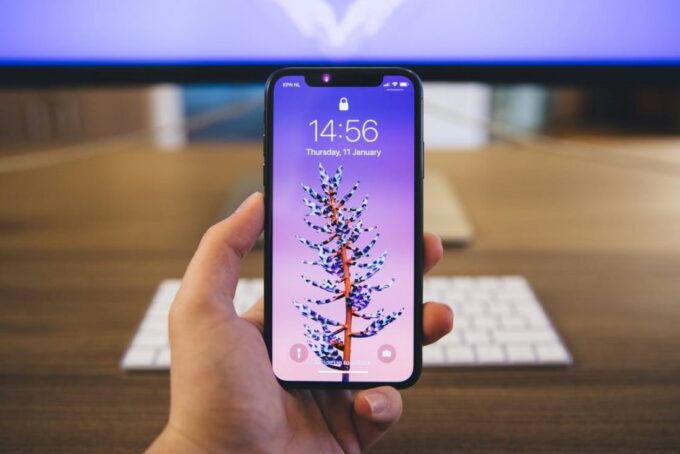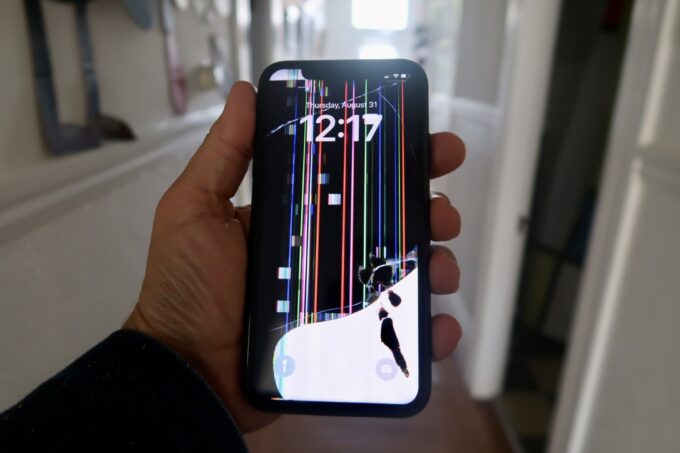Picture this: You’re one of the millions who have eagerly updated their iPhone to the brand-new iOS 17, only to be met with an unexpected and unwelcome surprise. Reports indicate that a staggering number of users are experiencing an iPhone screen glitch that renders their devices almost unusable. In the wake of the iOS 17 update, a significant number of these iPhone aficionados are tapping into online support forums, searching for iPhone Screen Unresponsive Solutions and How to Fix iPhone Screen Issues, making it abundantly clear that a glitch is not just an anomaly—it’s a widespread hassle.
Those who have run headlong into these technical snags post-update are grappling with issues ranging from inaccessible Home Screens to unresponsive power buttons, and vanishing app shortcuts, but the challenges don’t end there. Some unlucky few discover continuous Wi-Fi disconnections, apps freezing up, and their devices requiring forced restarts—behaviors far removed from the seamless iPhone experience that users have come to know and rely on. For the iPhone 14 Pro Max elite, the grievances stretch to videos that won’t play and text messages that won’t send, with troubles persisting even post device restart. Further frustrations include the mysterious disappearance of purchased ringtones, wiped email labels, and updates that, ironically, seem to dismantle more than they improve.
But not all hope is lost. With updates such as iOS 17.0.1 and 17.0.2, Apple is diligently working to squash these bugs, keeping channels like the official Apple Support forums abuzz with solutions and workarounds. It’s here that iPhone users are directed to computer-based iOS updates as a lifeline for some issues, while others might still be on the lookout for a more elusive fix.
Our mission today is to navigate through these tumultuous tech troubles and offer clarity with tangible iPhone Screen Glitch Fixes, ensuring your digital companion returns to its premium form.
Key Takeaways
- Recent iOS 17 update is causing widespread iPhone screen unresponsiveness and other issues.
- Common problems include Home Screen inaccessibility, power button malfunctions, and Wi-Fi disconnections.
- Apple’s subsequent updates, such as iOS 17.0.2, provide necessary bug fixes.
- Users might need to perform computer-based updates to mend some glitches effectively.
- Official Apple Support forums and channels are vital resources for troubleshooting and solutions.
- Consistent reporting from users helps Apple identify and address the most pressing issues.
Understanding the iPhone Screen Glitch in iOS 17
An unexpected iPhone screen moving on its own can be perplexing and disruptive for users who have upgraded to iOS 17. This phenomenon, while puzzling, is not entirely uncommon. Numerous reports have surfaced from the Apple community regarding the iOS 17 screen movement issue. These incidents range from screens that drift without input to sudden unresponsiveness, hampering the device’s usability and efficiency.
Troubleshooting the iPhone screen moving issue starts with recognizing the patterns that lead to these unwelcome occurrences. Users often encounter an inability to interact with their home screens, sporadic button unresponsiveness, or find themselves trapped in particular apps. What seems like a mere annoyance at first glance actually suggests a more profound, systemic issue entrenched within the latest iOS 17 operating framework.
For many users, a simple reset or settings adjustment fails to provide a lasting solution, prompting a deeper inquiry into the underlying causes. In addition to screen anomalies, individuals report a series of connected troubles, such as:
- Wi-Fi connections that terminate unexpectedly.
- Apps that freeze or crash, necessitating repeated restarts.
- A surge of seemingly extraneous features that don’t enhance user experience.
The chatter across forums and social platforms echoes a sentiment of frustration and concern. The glitches encountered post-update have left users questioning the overall stability and reliability of iOS 17. The burgeoning troubles have even pushed some to consider reverting to previous versions of iOS or, in more extreme sentiments, switching to alternative smartphone brands.
As users navigate these challenges, it becomes imperative to approach the troubleshooting process with a blend of patience and persistence. With the right steps, users can aim to mitigate the iPhone screen moving unpredictably and restore their devices to a state of predictable function.
“Before the iOS 17 update, my iPhone was working seamlessly. Now, the screen jumps around without any rhyme or reason. It’s especially frustrating when I’m in the middle of something important.” – Shared by an affected user on an Apple discussion forum.
iPhone Screen Moving on Its Own? Fixes Available on iOS 17

Source: profiixsouthchase.com
Experiencing iOS 17 Touch Screen Problems can be frustrating, but Apple has provided several fixes to tackle the issue of iPhone screens moving independently. From software updates to hardware inspections, let’s explore how you can resolve these irritations and restore your iPhone’s functionality.
Update Your iPhone to the Latest Software Version
One of the primary steps in resolving iPhone screen moving independently is to ensure your device is running on the most recent software version. Updating to iOS 17.0.2 may solve the majority of screen issues caused by previous versions.
Restart Your iPhone to Resolve Screen Issues
Often, a simple restart can provide a temporary fix to iPhone screen jumps around or becomes unresponsive. This action can help recalibrate the device’s system, potentially smoothing out any erratic behavior.
Perform a Hard Reset as a Potential Quick Fix
If you need an immediate remedy for a frozen screen or other screen-related issues, a hard reset could be the answer. Many users find that this step offers a quick return to normalcy amidst the array of iOS 17 glitches.
Check for Physical or Water Damage
In some scenarios, screen issues may be unrelated to software glitches. Check your iPhone for any signs of physical damage or water exposure, as these factors could contribute to iPhone screen unresponsive solutions being ineffective.
If your iPhone’s troubles persist after all software-related fixes have been attempted, consider seeking professional advice. Understanding the root of the problem is key to implementing the appropriate solution—whether it’s a simple update or a more complex repair.
Advanced Troubleshooting for Persistent Screen Glitches
When faced with an iPhone that continues to experience screen movement issues or becomes entirely unresponsive, there are a series of advanced troubleshooting steps that can be undertaken. These steps go beyond the basic fixes to address the root causes of persistent screen glitches, ensuring your device returns to optimal functionality.
One such measure is to restore the iPhone to its factory settings. This is a decisive step that can rectify deep-seated errors but should be approached with caution, as it will erase all data from the device. Users are advised to back up their data before proceeding with this course of action. For those navigating these daunting waters, the table below provides a detailed comparison of when to consider a factory reset versus when to seek professional support.
| Action | Considerations | Recommended for |
|---|---|---|
| Factory Reset | – Data backup imperative – Last resort step – Device becomes as good as new |
– Persistent software issues – Major functionality faults |
| Professional Support | – Potentially identifies undiagnosed hardware issues – Can provide in-depth device health check – Offers expert repair services |
– Suspected physical damage – Recurring glitches post factory reset |
Another key strategy involves utilizing Apple’s feedback channels to report lingering bugs. Such input can prove invaluable in shaping future updates and bug fixes. Apple continuously updates their systems and software resolutions based on user feedback, highlighting the importance of community contributions to overall product improvement.
Engaging with official Apple support channels and resources can pave the way for nuanced solutions that cater specifically to your device’s needs while contributing to the larger ecosystem of Apple products.
- Restoring iPhone to factory settings
- Backup of all essential data
- Reporting issues directly to Apple feedback
- Considering a downgrade for stability
While troubleshooting iPhone screen moving glitches, don’t overlook the potential need for advanced iPhone screen fixes. Whether through a factory reset or seeking professional aid, the goal remains clear: to restore your iPhone to its rightful, smoothly functioning state.

Source: docpop.org
Conclusion
In the realm of tech, the arrival of iOS 17 was marked by a curious blend of anticipation and sighs as users navigated through a maze of screen glitches. These malfunctions ranged from an unresponsive touch to baffling screen behaviors that have left many searching for reliable iPhone Screen Glitch Fixes. Throughout this exploration into iOS 17’s quirks and solutions, we’ve highlighted effective strategies starting with the simplest — upgrading to the latest software version, performing system resets, and seeking guidance from Apple’s support.
Recap of iOS 17 Glitch Fixes and Tips
A summary of the discourse on iOS 17 Solutions paints a picture of perseverance amidst digital frustrations. Users suffering under the weight of persistent screen irregularities found solace in a range of Recap of iPhone Fixes, including hard resets and comprehensive system restores. These steps serve as a starting point for those grappling with the initial confusion brought about by the newest Apple update. It is often through such measures that functionality sees the light of day again.
When to Seek Professional Support for iPhone Repair
However, there comes a moment when the software tweaks no longer yield the desired tranquility, and the need for Professional iPhone Screen Repair emerges. Should users continue to wrestle with battery drain or overheating even after applying all recommended fixes, it becomes clear as day: the time has come to Seek iPhone Help. These persistent issues may hint at deeper hardware malfunctions that demand a technician’s touch.
The Importance of Reporting Bugs to Apple
Last but certainly not vital in maintaining the technological ecosystem’s balance is the Importance of Feedback. By Reporting iPhone Issues and alerting Apple to various iOS bugs, users play a crucial role in shaping future updates. The process of Reporting iOS Bugs to Apple is a testament to the collective power users have in perfecting the iOS experience, ensuring the software matures into a version devoid of current hindrances and rich in user fulfillment.
FAQ
What should I do if my iPhone screen starts moving on its own after the iOS 17 update?
If your iPhone screen is glitching or moving unexpectedly, it’s recommended to update your device to the latest iOS version, such as iOS 17.0.2, which may include fixes for these issues.
How can I fix an unresponsive iPhone screen?
You can attempt to fix an unresponsive screen by performing a restart or a hard reset. If the issue persists, make sure to check for any physical or water damage. If none is present, restoring the device to factory settings may resolve the issue.
My iPhone screen is jumping around and becoming unresponsive; will restarting my iPhone help?
Restarting your iPhone can sometimes resolve temporary glitches by recalibrating the system. However, if the problem persists after a restart, a more in-depth troubleshooting method may be required. You could consider performing a hard reset or updating iOS.
Are there any fixes available for iOS 17 touch screen problems?
Yes, if you’re experiencing touch screen problems with iOS 17, try updating your device to the latest software version, restart your device, or perform a hard reset. Check for any signs of physical damage as well and, if necessary, seek professional repair services.
What should I do if my screen glitches persist even after implementing the suggested fixes?
For persistent screen glitches, consider restoring your iPhone to factory settings. If this does not resolve the issue, contact Apple Support or visit an Apple Store for further assistance. It’s also essential to report these issues to Apple to help address any underlying software bugs.
When is it necessary to seek professional support for iPhone repair post-iOS 17 update?
Professional support is necessary when your iPhone experiences recurring issues, such as unaddressed screen glitches, rapid battery drainage, overheating, or hardware malfunctions, which are not resolved through software updates or standard troubleshooting methods.
How important is it to report bugs after updating to iOS 17?
Reporting bugs is crucial for the improvement of iOS software. By providing specific feedback to Apple, users can help the company identify and resolve issues more efficiently, potentially preventing similar problems for others and enhancing the overall user experience in future updates.


![How To Hide Apps on iPhone [Secret Method] – 2024 Guide How To Hide Apps on iPhone [Secret Method] – 2024 Guide](https://www.digitalcare.top/wp-content/uploads/2018/02/hide-211x150.jpg)
![Lost Mode iPhone Unlock Guide [2024 Updated] Lost Mode iPhone Unlock Guide [2024 Updated]](https://www.digitalcare.top/wp-content/uploads/2024/03/Lost-Mode-iPhone-Unlocking-211x150.jpg)